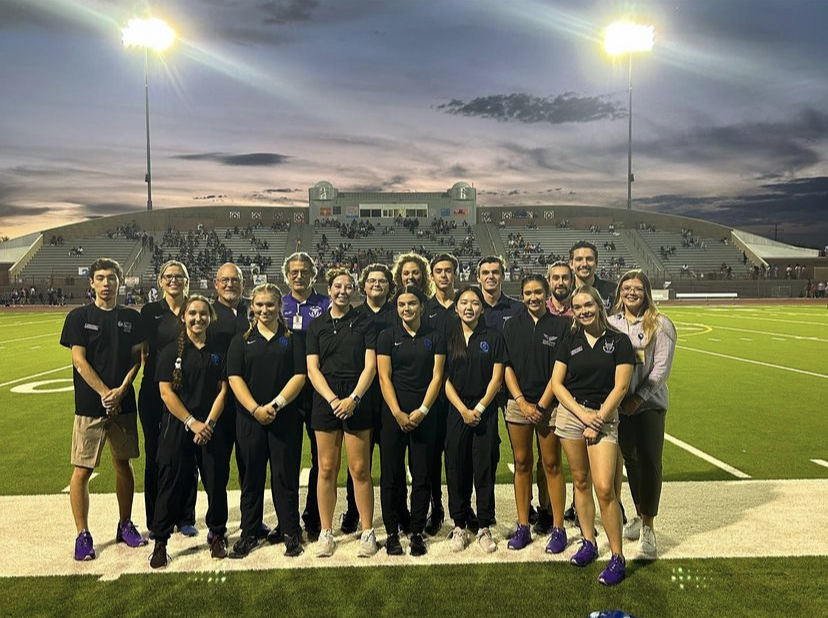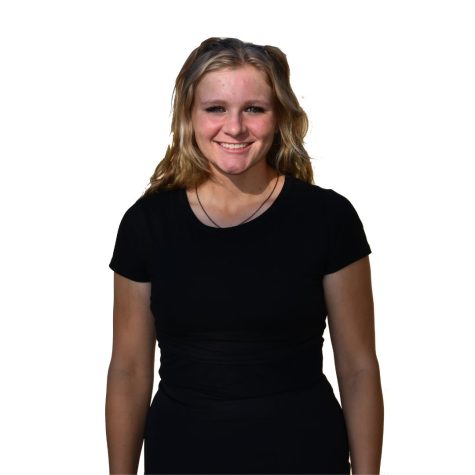Sports Med: more than just a class
Photo courtesy of Sports Medicine
Sports Medicine staff at Cesar Chavez High School after a varsity football game.
November 5, 2022
OHS is privileged to have one of the most diverse course selections at the high school level. One of these rare and intriguing programs is OHS’s very own sports medicine program. As a CTE class, sports medicine allows students to prepare for future careers in medicine while still in high school.
Sports medicine consists of many different skill sets. From a simple introduction course, to being on the sidelines of varsity football games, OHS sports medicine helps students fulfill their dreams while preparing them for jobs and post secondary education.
“Our sports medicine is a three year long program that gets students real life experience outside of the classroom. Once they built that foundation of sports medicine, so anatomy, injuries, special tests and things like that they move forward in the program and can ultimately be with us on the sidelines during practices and games so that they can see real life injuries and be able to put what they learnt to practice,” said Akayla Dolezal, sports medicine teacher.
At first glance the course may look like it is only for those looking to go into the medical field, but the class helps teach different communication and problem solving skills that can apply to any career path.
“It’s a career education course for anybody that wants to get into healthcare and it would give them tools for hands-on experience. Learning how to figure things out and problem solve and when in doubt know how to utilize their resources,” said Melissa Portela, sports medicine teacher.
The course may seem intimidating at first, but it is filled with hands-on experiences that help keep students engaged and interested in what they are learning.
“It’s hands on. That’s my favorite part. I don’t like just sitting at a desk. When we are in the training room it gets us active and paying attention,” said Natalie Clausen, senior.
Besides just working in the training room, students in the program also get the opportunity to see real-life examples of injuries in sports, and act in the moment if they are in the physical therapy technician program (PT tech).
“It is a very viable career path for those who love to help athletes and help other people. We go down to football games and volleyball games. You can be on the sidelines everywhere. If you want to be at the Olympic level you can do it,” said Dillon Currie, junior.
The sports medicine program sets students up for internships and even jobs during and after high school, giving a huge advantage to those in the class.
“We geared it around to make it more suitable for all the students the athletic training room, the hands on approach, the internships. We wanted to make it more career advantageous for the students because you don’t have to go to college unless you want to but there are options right after high school and while still in high school for this program,” Portela said.
Being able to have an advantage when it comes to the work force is always a positive and OHS sports medicine does their best to set their students up for as much success and opportunity as they can.
“I like to give my students a ton of information and a ton of opportunities to learn so they can kind of gear their oath to how they want it. Sports med is kind of an umbrella of opportunities but I want them to think [about] wider healthcare. I try to prepare them for jobs that probably don’t exist yet. Technology driven. Lab driven. telemedicine driven,” Portela said.
The program encourages independence while still having access to a professional if needed. Not only is this a skill necessary in the medical field, but any profession.
“They have a buy-in. They have a role and they have an important role. We try to give them autonomy. We try to give them responsibilities and we don’t want them to just sit back and just be a fly on the wall. We want them to be involved throughout the whole process,” Portela said.
In order for a program to be successful, the students need to believe in the program as much as the teachers do, which is definitely the case in the OHS sports medicine classes.
“I think that our biggest success is our students wanting to do it and taking the initiative of ‘hey we are gonna get this done and this is what we are supposed to do and this is what we want to do’,” Dolezal said.
The environment of the class is also important for the success of a program. OHS sports medicine students have to stay engaged and be able to use all the resources they can in order to get the most out of the course and simulate what the workforce will be like.
“It’s not just studying the body and notes and stuff. It’s being involved with people, especially athletes, and the people around you and learning how to communicate with them and that really helps us learn about the body and it makes it fun,” said Ava Mosely, senior. “Everyone in that class is so involved and they know what they’re doing. No one is closed off. Everyone is helpful. If you ask somebody they give you the full answer and not like an every man for themselves.”
Sports medicine is everywhere and it is not always easily identified. As more and more people join the medical community, there is more and more attention brought to the field of sports medicine.
“I think that as more and more people understand how important sports medicine is, how much it is growing in interest in major sports like the NFL and the MLB and how more people are paying attention to concussions and CTE that it is going to keep expanding,” said Ashtyn Kelly, senior.
The health of athletes, physically and mentally, is one of the most overlooked but important aspects of any level sport. As technology is getting more and more advanced, sports medicine technicians are able to identify problems faster and more accurately, ensuring the safety of athletes and even the general public.
“I think as technology grows, sports med[icine] will grow as well. It will make it easier and quicker to diagnose athletes and know what is wrong,” said Jake Coburn, junior.
Even if you do not plan on entering the medical field, sports medicine is still an extremely versatile course and provides a different way of thinking as well as the ability to help people all around you.
“Don’t be afraid to throw yourself into new unfamiliar faces. I know you can be timid or overwhelmed by a bunch of new information but use that fear and try to flip it into a strength and challenge yourself,” Kelly said.



